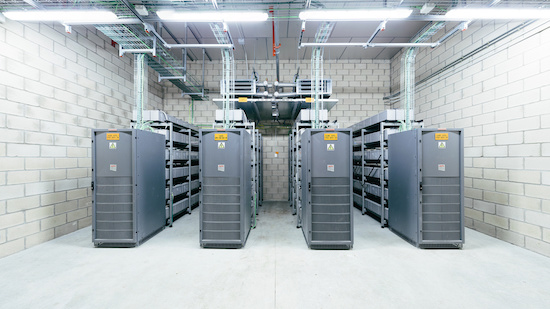Right Here, Right Now at The Lowry, Salford
We are used to thinking of the internet as something essentially vaporous and immaterial. Metaphors of clouds and celestial jukeboxes reinforce this notion of a space of no space, something invisible yet quasi-omnipotent like the ‘ether’ of the nineteenth century. Timo Arnall’s film Internet Machine cuts through this “childish myth” with its spectacular exploration of the very real infrastructures that support it. In rich 4k multiscreen installation, Arnall takes us deep inside one of the world’s largest datacentres, run by Telefonica in Alcalá, Spain.
Arnall’s eerie yet stately cinematic experience is just one of the works on display in the Lowry’s new major investigation of art’s relationship to the digital. Bringing together a range of different media and approaches, from Mishka Henner’s sublime appropriations of Google Earth landscapes to the data-based approach to musical composition adopted by Ed Carter and the audio-visual laser shows of Robert Henke (aka techno producer, Monolake).
Some 16 different artists from around the world will each be showing work from the present decade, reflecting lead curator Lucy Dusgate’s hope to provide “a moment in time for us to reflect on the developments in art and digital over the last five years, and anticipate the next tantalising steps.”
Right Here, Right Now is on at The Lowry from 14 November to 28 February
Christine Sun Kim at Carroll/Fletcher, London
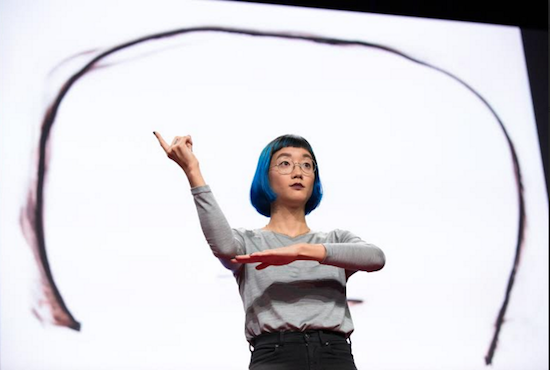
“As a deaf person living in a world of sound, it’s as if I was living in a foreign country, blindly followings its rules, customs, behaviours, and norms without ever questioning them.” American sound artist Christine Sun Kim has a unique perspective on her chosen artistic material. Born deaf, her experience of “sound etiquette” was of something alien, at once imposed from without and painstakingly learnt through careful observation.
In the past her works have involved collaborations with Dev Hynes of Blood Orange and Jamie Stewart of Xiu Xiu, songs transposed below the range of human hearing, and an ‘opera’ conducted through tiny facial gestures. Frequently communal and participatory, always thought-provoking, Sun Kim has exhibited at New York’s Museum of Modern Art and is a forer artist-in-residence at the Whitney Museum.
The forthcoming show at Carroll/Fletcher will mark her UK debut with a diverse show including drawings, sounds pieces and an installation, Game of Skill which transforms gallery visitors into mobile musical instruments. “In the back of my mind, I’ve always felt that sound was your thing – a hearing person’s thing,” she said in a recent Ted talk. “Sound is almost like money and power. It’s so powerful that it could either disempower me and my art, or empower me. I chose to be empowered.”
Christine Sun Kim’s Rustle Tustle opens at Carroll/Fletcher on 27 November
Theaster Gates at Temple Church, Bristol
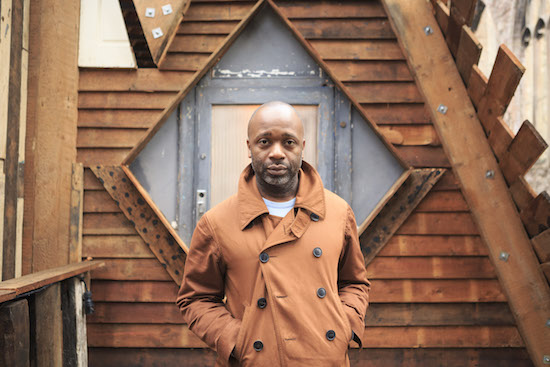
Theater Gates, photo: Max McLure
Art and urbanism come together in the work of Chicago-born Theaster Gates. Known for restoring decrepit properties in the notoriously divided South Side of his home town, he is both founder of the Rebuild Foundation, a non-profit dedicated to revitalising impoverished neighbourhoods, and president of Chicago University’s Arts + Public Life outreach and education project. Last year Art Review placed him at number 44 in their art world Power 100.
From now until the 21st of November, his Sanctum, a temporary structure built within the ruins of Bristol’s Temple Church, will host a continuous programme of performances, 24 hours a day, for a total of 552 hours. Highlights will include the pounding Balkan rhythms of Ushti Babba, the manipulated field recordings of Sleepdogs, and the politically-charged poetry of Shagufta K. There will be heavy, heavy bass sounds from local collective Ree-Vo and contemporary choral music from the Bristol Camerata, all housed within a Grade II listed ruin supposedly built by the Knights Templar. With no rehearsals, no previews and no advance schedule, Sanctum is to be a continuous happening, a spontaneous encounter with the city’s persistently inspiring cultural scene.
Sanctum runs at Temple Church, Bristol, until 21 November
Cristina Iglesias at Marian Goodman, London
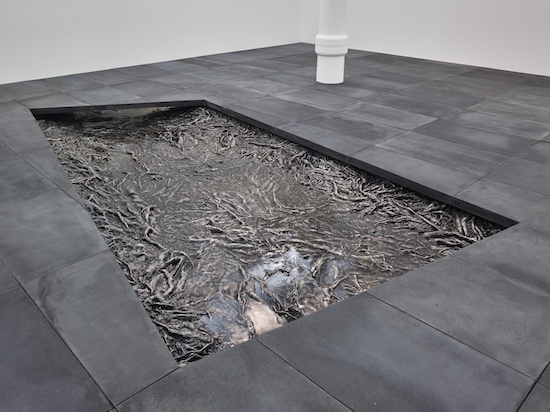
Courtesy the Artist and Marian Goodman Gallery Copyright Cristina Iglesias
We are used to thinking of sculpture as something that extends up from the floor (or, perhaps, after Alexander Calder, down from the ceiling). Iglesias’s new show at Marian Goodman’s Soho gallery turns that idea on its head. Like a version in miniature of her recent major public artwork in the Spanish city of Toledo, three openings have been cut into the floor of the space to reveal the trickle of water through dense undergrowth beneath.
Arriving at the press preview in the teeming river, I was surprised to find that the sound of running water persevered after I had stepped through the doors of the gallery. But this kind of confusion of interior and exterior spaces is precisely the artist’s intention. “Sculpture is able to create spaces where one can escape from the chaos of the city,” she said. But despite the idyllic connotations of this sentiment, there is something curiously threatening about the grey-chromed tangle of roots apparently here uncovered. For all the bucolic – or even Situationist (‘Sous les pavés…’ etc.) – resonances of a babbling brook passing through WC1, the image it recalled most forcefully for me was from Lars Von Trier’s film Antichrist. “Nature is Satan’s church.”
Cristina Iglesias’s Phreatic Zones will be at Marian Goodman, London, until 19 December
Simon Denny at Serpentine Gallery, London
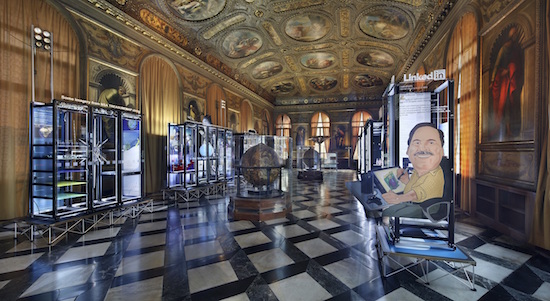
Simon Denny, Secret Power, 2015, photo: Jens Ziehe
For his much-feted solo show at this year’s Venice Biennale, Simon Denny commissioned a series of illustrations from former National Security Agency graphic designer, David Darchicourt. Fascinated by the aesthetics of the Powerpoint slides leaked by Edward Snowden, Denny also reproduced many of the logos and cartoons found in the NSA’s own internal documents and memos. “They are very important cultural documents,” Denny insisted, “and the leak made them into 21st-century masterpieces.” His intention, he claimed, was to contextualise these documents within the history of conceptual art.
This month Denny will open his first London solo show at the Serpentine Sackler Gallery with a series of new installations revolving around the history of modern management practices and their roots in the hacker culture of the twentieth century. Denny “emphasises the grey area between private and public industries, digital and material culture,” claim Serpentine co-directors Julia Peyton-Jones and Hans Ulrich-Obrist. “His work sheds a light on subject-matter that is often rendered invisible to the general public due to its complexity and the lack of available information.” Working with architect, Alessandro Bava, journalist-turned-artist Matt Goerzen, and K-Hole’s Emily Segal, Denny will be transformed the space of the Serpentine into a multi-layered built structure bearing sculpture, models, and vitrines.
Simon Denny, ‘Products for Organising’, opens at the Serpentine Sackler Gallery on 25 November

